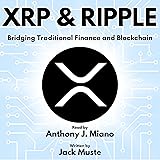Is Bitcoin Mining Still Worth It in 2025? A Deep Dive into Profitability and Strategy
In the dynamic world of cryptocurrency, the question often arises: is Bitcoin mining still a viable and profitable venture? The landscape for Bitcoin mining is constantly shifting, influenced by market price, increasing network difficulty, and the relentless pursuit of energy efficiency. As expertly discussed in the accompanying video by Drew Vosk, navigating these factors is crucial for anyone considering or currently operating a Bitcoin mining farm.
The journey of building and maintaining a mining operation, even with an eye on sustainable solutions like solar power, brings forth complex profitability considerations. Drew highlights a significant daily payout to Bitcoin miners, often totaling around $47 to $50 million across the network. This substantial figure might suggest easy profits, but the reality for individual miners is nuanced. Understanding the intricate balance between revenue and operating costs, especially electricity, is paramount to determining true profitability in 2025 and beyond.
The Evolving Landscape of Bitcoin Mining Economics
The core of Bitcoin mining profitability hinges on two primary factors: the price of Bitcoin and the network’s mining difficulty. At the time of the video’s recording, Bitcoin hovered around an impressive $96,000 per coin, a valuation that directly impacts the dollar value of newly mined BTC. This high price point helps offset rising operational costs and increasing competition. Miners globally share in the daily distribution of new Bitcoin, along with transaction fees from the blockchain, which form a crucial part of their overall earnings.
A pivotal event in Bitcoin’s history, the halving, occurred in 2024. This programmed reduction in the block reward significantly cut the amount of new Bitcoin awarded to miners per block. While it barely impacted the network’s difficulty in the short term, its effect on profitability was substantial. Miners now rely more heavily on transaction fees and the appreciation of Bitcoin’s price to maintain their margins. The evolving economic model of Bitcoin mining demands continuous adaptation and strategic foresight from all participants.
Unpacking Mining Difficulty: A Constant Challenge
Bitcoin mining difficulty is a metric that adjusts approximately every two weeks to ensure new blocks are found consistently, roughly every ten minutes. As more miners join the network, or existing miners deploy more powerful hardware, the total “hash rate” of the network increases, driving difficulty upwards. This phenomenon directly impacts an individual miner’s share of the block reward.
Drew’s observations underscore this relentless climb: a 1.6% increase in difficulty in just seven days is a clear indicator of growing competition. Looking back further, the difficulty has surged from 67 to 104 over the last year, and from a mere 22 three years ago to its current level. These figures illustrate an undeniable trend towards a more competitive mining environment. Such increases mean that older, less efficient hardware quickly becomes uneconomical, pushing miners to constantly upgrade or find creative ways to reduce their operating expenses.
Real-World Profitability: VoskCoin’s Numbers Explained
To truly understand the “worth it” question, examining real-world numbers is essential. Drew provides a transparent look at his own Bitcoin mining farm, which currently operates 26 miners on a specific pool. This setup comprises five latest-generation machines and 21 previous-generation models, collectively generating approximately 2.9 Petahash of mining power. This raw power translates to a daily reward of about 0.00182 BTC.
At Bitcoin’s $96,000 price point, this daily yield equates to roughly $175 in revenue. However, revenue is only one side of the coin. Each of Drew’s machines incurs an electricity cost of approximately $5 to $7 per day. After deducting these significant operating expenses, the daily profit for his entire 26-miner operation shrinks to around $50. This equates to just under $2 of profit per machine per day, highlighting the tight margins. While an annual projection, assuming Bitcoin’s price holds or increases, could see profits of $20,000 to $40,000 if held, the day-to-day operational reality can be far less thrilling.
The Critical Role of Energy Efficiency and Hardware
At the heart of any competitive mining operation are Application-Specific Integrated Circuit (ASIC) miners. These purpose-built computers are designed for one task: efficiently solving the cryptographic puzzles required to mine specific cryptocurrencies, like Bitcoin. Their performance is often measured in watts per terahash (W/TH), indicating how much power is consumed for a given amount of processing speed.
The rapid evolution of ASIC technology means newer models, such as the S21s and the recently reviewed Avalon miners, offer significant efficiency improvements over their predecessors. Drew’s strategy to extend the life of his older S19 miners involves “downclocking” them. By reducing their operating speed, he can decrease their power consumption from approximately 30 W/TH to a more efficient 20-25 W/TH. This trade-off significantly enhances their long-term viability and allows for a higher density of miners within existing power infrastructure. However, the continuous release of increasingly efficient hardware by manufacturers presents a persistent challenge, forcing miners to grapple with rapid hardware obsolescence and the need for ongoing investment.
Strategic Crossroads for Miners: Expand, Pivot, or Optimize?
The current market cycle presents a strategic crossroads for many miners, echoing Drew’s own reflections on “what do I do from here?” Several pathways emerge, each with its own set of risks and rewards.
One common strategy is **expansion**. During a bull run, the urge to acquire more gear and grow the mining farm is strong, often feeling like a “last call” before prices soar further. However, experienced miners often advise building out infrastructure and acquiring machines during bear markets when costs are lower, rather than chasing rising prices. Another crucial consideration is **energy solutions**. With electricity costs being the primary operational expense, investing in solar power, both for residential and potential commercial deployment, becomes increasingly attractive. Drew is exploring options like pulling in three-phase power, despite skyrocketing installation costs, highlighting the critical need for cheaper and more stable energy sources.
Some miners might consider a **pivot to alternative ASIC mining**. The comparison Drew draws between his 26 Bitcoin miners and a single Antminer L9 mining Dogecoin is particularly eye-opening. While Dogecoin mining might currently offer similar daily profits after electricity, it comes with increased volatility compared to Bitcoin. This option appeals to those willing to embrace higher risk for potentially higher immediate returns. Lastly, a growing number of entities, including publicly traded companies like Marathon Digital (MARA), are choosing **direct Bitcoin investment** over aggressive mining expansion. MARA’s shift to simply buying and holding Bitcoin has proven successful for its stock performance, suggesting that for some, the direct investment route might offer a simpler, less operationally intensive path to Bitcoin exposure.
Is Bitcoin Mining a Long-Term Game?
The long-term viability of Bitcoin mining hinges on several factors, primarily the efficiency of your hardware and the cost of your electricity. Drew realistically assesses that his S19 generation miners are unlikely to be viable by 2026 without substantial electricity offsets, such as solar power. This highlights the industry’s continuous drive toward greater efficiency and the rapid pace at which older equipment becomes obsolete.
Current-generation miners, like the S21s and new Avalon models, are essential for maintaining competitiveness in the future. Their improved power efficiency allows miners to generate more hash rate per watt, directly impacting profitability. Ultimately, Bitcoin mining remains a long-term game that rewards strategic thinking, continuous optimization, and an understanding of market cycles. While the day-to-day profits might not always be thrilling, the long-term holding of mined Bitcoin, as Drew experienced, can yield significant returns when the market performs well. The key is to remain adaptable, constantly evaluate your operational costs, and explore every avenue for increased efficiency in this ever-evolving industry of **Bitcoin mining**.







